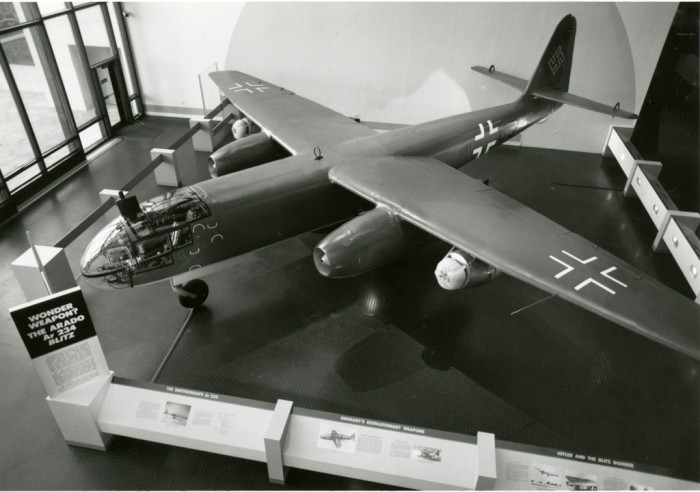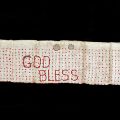Today in Smithsonian History: October 26, 1993
October 26, 1993 The National Air and Space Museum opens an exhibition featuring the world’s first operational jet bomber, the German Arado Ar 234B Blitz. The Arado entered service in 1944 after the Normandy invasion of World War II. She received 18,600 hours of restoration work by Air and Space Museum staff after the airplane was transferred to the Smithsonian’s aeronautical collection in 1949 by the United States Air Force.
The exhibition is the second in the museum’s Air Power in World War II series.
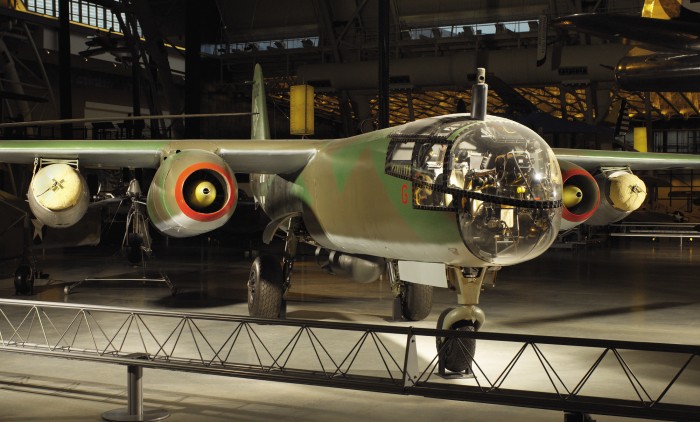
The Arado Ar 234 B Blitz (Lightning) was the world’s first operational jet bomber and reconnaissance aircraft. The first Ar 234 combat mission, a reconnaissance flight over the Allied beachhead in Normandy, took place August 2, 1944. With a maximum speed of 735 kilometers (459 miles) per hour, the Blitz easily eluded Allied piston-engine fighters. While less famous than the Messerschmitt Me 262 jet fighters, the Ar 234s that reached Luftwaffe units provided excellent service, especially as reconnaissance aircraft.
This Ar 234 B-2 served with bomber unit KG 76 from December 1944 until May 1945, when British forces captured it in Norway. Turned over to the United States, it was brought to Wright Field, Ohio, in 1946 for flight testing. In 1949 it was transferred to the Smithsonian, which restored it in 1984-89. This Arado is the sole survivor of its type.
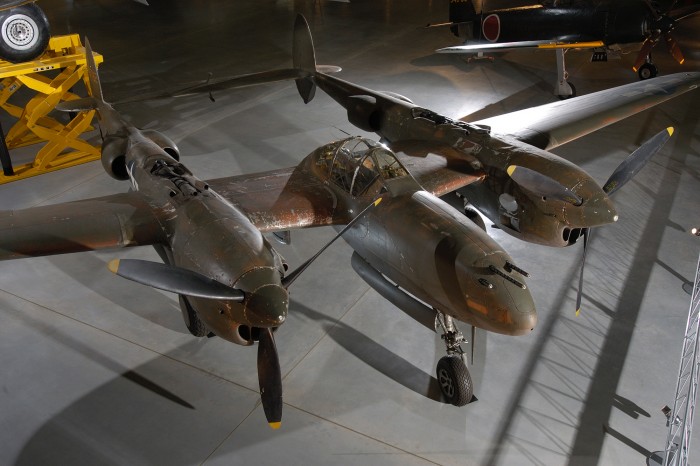
Lockheed P-38J-10-LO Lightning–In the P-38 Lockheed engineer Clarence “Kelly” Johnson and his team of designers created one of the most successful twin-engine fighters ever flown by any nation. From 1942 to 1945, U. S. Army Air Forces pilots flew P-38s over Europe, the Mediterranean, and the Pacific, and from the frozen Aleutian Islands to the sun-baked deserts of North Africa. Lightning pilots in the Pacific theater downed more Japanese aircraft than pilots flying any other Army Air Forces warplane.
Maj. Richard I. Bong, America’s leading fighter ace, flew this P-38J-10-LO on April 16, 1945, at Wright Field, Ohio, to evaluate an experimental method of interconnecting the movement of the throttle and propeller control levers. However, his right engine exploded in flight before he could conduct the experiment.
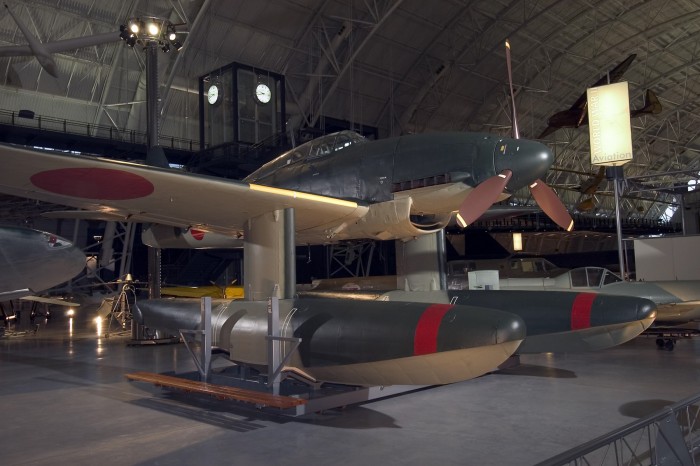
Aichi M6A1 Seiran (Clear Sky Storm)–Aichi chief engineer, Toshio Ozaki, designed the M6A1 Seiran to fulfill the requirement for a bomber that could operate exclusively from a submarine. Japanese war planners devised the idea as a means for striking directly at the United States mainland and other important strategic targets, like the Panama Canal, that lay thousands of kilometers from Japan. To support Seiran operations, the Japanese developed a fleet of submarine aircraft carriers to bring the aircraft within striking distance. No Seiran ever saw combat, but the Seiran/submarine weapons system represents an ingenious blend of aviation and marine technology.
This M6A1 was the last airframe built (serial number 28) and the only surviving example of the Seiran in the world. Imperial Japanese Navy Lt. Kazuo Akatsuka ferried this Seiran from Fukuyama to Yokosuka where he surrendered it to an American occupation contingent.
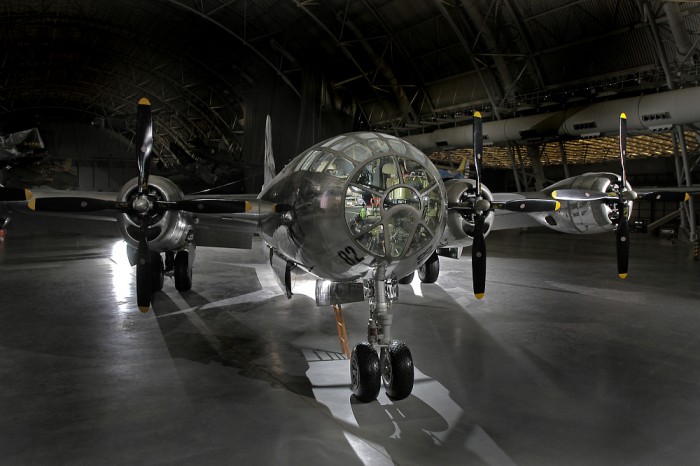
Boeing B-29 Superfortress Enola Gay–Boeing’s B-29 Superfortress was the most sophisticated propeller-driven bomber of World War II and the first bomber to house its crew in pressurized compartments. Although designed to fight in the European theater, the B-29 found its niche on the other side of the globe. In the Pacific, B-29s delivered a variety of aerial weapons: conventional bombs, incendiary bombs, mines, and two nuclear weapons.
On August 6, 1945, this Martin-built B-29-45-MO dropped the first atomic weapon used in combat on Hiroshima, Japan. Three days later, Bockscar (on display at the U.S. Air Force Museum near Dayton, Ohio) dropped a second atomic bomb on Nagasaki, Japan. Enola Gay flew as the advance weather reconnaissance aircraft that day. A third B-29, The Great Artiste, flew as an observation aircraft on both missions.
Courtesy of Smithsonian Institution Archives and the National Air and Space Museum
Posted: 26 October 2019
- Categories:
